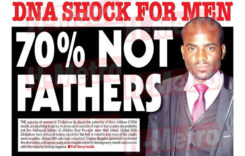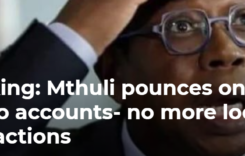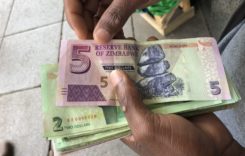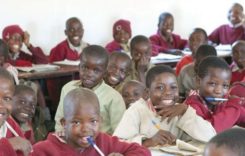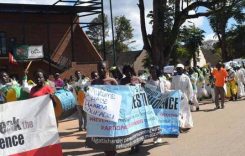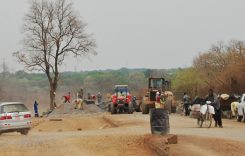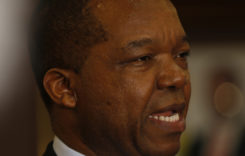Zimbabwe’s media coverage of the run up to general elections set for July 30 was largely biased and partisan in the first 10 days from the May 30 proclamation of the election date by the state president, according to a study by local organisation, Media Monitors.
The following is a summary of Media Monitors’ report for the period May 31 to June 9 2018:
In campaign news
With proclamation of the election, the various political parties have intensified campaign activities. Campaigns take up the most of coverage of election related issues in the media.
State controlled media
The state controlled media have focused on the policy vision of Emmerson Mnangagwa’s campaign, his plan to revive the economy through industrial resuscitation, agriculture and foreign direct investment. Both the public print and electronic platforms do not critique the feasibility of his policies. This is however not the case with the opposition particularly MDC Alliance leader whose coverage has been reduced to analysis of gaffes made at rallies.
The public media appear to be more critical of the MDC Alliance leader than any other leader. The MDC Alliance recently launched its 2018 policy document, which was broadcast live on ZTV from 11.30 hours to 13.00 hours. The policy document was much more criticized by political analysts who were quoted by the state media.
MDC Alliance campaign activities that were covered on ZBC include its Wedza rally, the march for electoral reforms, the launch of its policy document and another rally at Mahusekwa Growth Point.
Other political party campaign activities that were covered included a Zimbabwe Partnership for Prosperity (ZIPP) rally in Mbare and Forces of The Liberation Organization of African National Party’s Egypt Dzinemunhenzva saying the party is set to launch its manifesto just after the nomination court sits. There is little analysis and critique of these campaign activities.
Twelve ZANU PF campaign activities were covered in the State-owned media. These included rallies in Gweru, Chegutu, Midlands, Masvingo, Wedza, Mvurwi and Chipinge. Other events that were covered included President Mnangagwa’s meeting with the Women’s League. This event was broadcast live on ZTV with Emmerson Mnangagwa’s speech being broadcast during primetime.Apart from rallies involving ZANU PF’s presidium, the government controlled media also gave coverage to aspiring members of parliament who include: Misheck Mataranyika, Tshinga Dube, Patrick Chinamasa, and Misheck Mangwende.
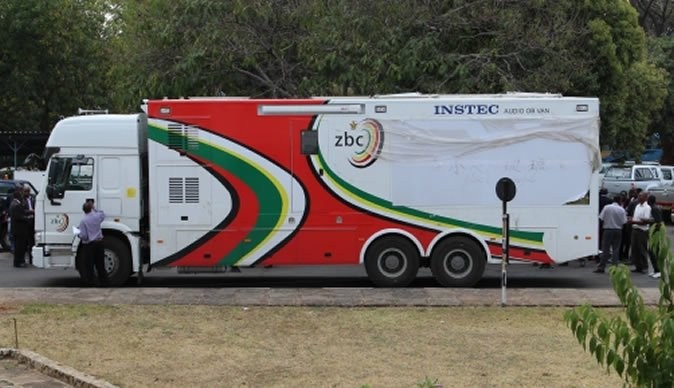
The state-run ZBC enjoys a broadcasting monopoly and covers the ruling party more than any of its rivals
Private media
The private media gave prominence to the two political parties ZANU PF and MDC T.The private press covered six of the MDC Alliance’s rallies including those in Mutoko, Wedza, Mahusekwa and Nkayi. It should be noted that the private media are also critical of the opposition parties as reflected in the section on tone of coverage.
In the private media, four ZANU PF campaign rallies were covered during the monitored. However, much focus was on Kembo Mohadi’s outbursts at rallies in Chegutu and Chiredzi where he claimed Zimbabwe is a one-party state and that the current leadership is a “junta”. Other ZANU PF rallies covered were in Mutoko and Gweru where Emmerson Mnangagwa presided.
Commercial Radio
In the commercial radio stations ZANU PF’s campaign activities received significantly more coverage than the other political parties.There was very little coverage on campaign eventsof the opposition parties. Noted was coverage of the ruling party’s rallies in Chegutu, Hurungwe East and the ZANU PF Women’s League meeting with presidential candidate Emmerson Mnangagwa.
As shown above, coverage of campaign activities in the local media has not been equitable; the activities of ZANU PF and MDC Alliance have received the lion’s share of the coverage. The campaign trails of the two parties’ Presidential candidates have been followed closely by both the private and publicly owned media. New political parties’ campaign events rarely receive coverage across all platforms monitored. Since we are in the official campaign period there are a lot of campaign events that are blacked out by the local media.
Objectivity in election related news
The main challenge observed by Media Monitors in election related news is the lack of objectivity. Overall, 33 percent of the monitored reports were not neutral. Local commercial radio stations covered political actors in a more neutral manner than the other news platforms monitored. Eighty-eight-percent of their coverage of political actors was neutral.
Reports that had challenges in neutrality were mostly one sided reports that did not give accused persons the right of reply or those that had a negative tone against particular political actors or parties.
Hate speech
Four instances of hate speech were recorded in the media during the monitoring period. Politicians were responsible for all four cases of hatespeech recorded. Language of hate was used during rallies targeting rival political actors and the international community. The media appears to be passive in its attitude towards hatespeech it covered, as it did not take a stand against the use of hatespeech by political players.
Gender representation
Over the 10 days monitored, representation of women political actors has been marginal on all the platforms monitored. Overall, women political actors accounted for 5% of the coverage that was recorded while men were featured in 95%. In the just ended ZANU PF primary elections only 22 women will be representing the party in National Assembly elections out of the 210 seats that are available. The print media gave relatively more coverage to women than the electronic media.
CONCLUSION
Reporting trends in the monitored print and electronic media in the first ten days since the beginning of the electoral period have shown that the local media still have a long way to go before meeting the requisite standards of fair and equitable coverage as stated in Zimbabwe’s Electoral Act. The distribution of space and time among political parties and actors is still skewed in favour of two political parties, ZANU PF and MDC-T (NC) and MDC Alliance.
The media’s tone of coverage among the political parties appears to be polarised in favour of certain political parties. In the State-owned press which has a constitutional obligation to treat all parties fairly, ZANU PF has received more positive coverage whilst, the opposition parties have received coverage that is mostly neutral save for MDC-T (NC) and MDC Alliance whose coverage is negative.
In the private press, ZANU PF has received more negative coverage whilst MDC Alliance has received relatively more positive coverage. Partial reportage by the media is unethical as it defies ethics of journalism. It also diminishes the electorate’s trust in the news media.
Issues of fairness and balance not only address the representation of political actors; it also speaks to the representation of diverse groups in society who include women and youths. These two groups have been underrepresented in all the news platforms monitored. It is imperative that women and youth political actorsreceive equitable coverage in the media, as they are critical stakeholders in Zimbabwe’s political landscape.
The media should reconsider the publishing of hate speech to avoid perpetuating discrimination and intolerance.
In light of the above observations, Media Monitors notes that it is important for ZEC to develop an effective media monitoring mechanism that helps to keep track of the media’s adherence to the dictates of the Electoral Act. This would assist to address lapses in ethical coverage before they disadvantage political actors and members of the public who rely on the media for updates and interpretation of electoral processes.
Media Monitors is an independent Trust registered under the laws of Zimbabwe. The organisation has a 18-year track record of monitoring the media, existing between 2000 and 2016 as the Media Monitoring Project of Zimbabwe (MMPZ) and re-branded to Media Monitors in 2017. The organisation monitors the media to promote evidence-based interventions for societal development. For more information contact us on 08677108362 or email us on mailto:[email protected].
ZimFact summary edited by Cris Chinaka
Do you want to use our content? Click Here




